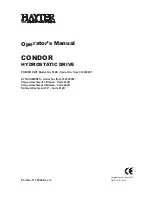
Applying I/Q vector modulation
R&S
®
SMM100A
287
User Manual 1179.1341.02 ─ 05
Figure 6-1: Definition of I/Q modulator in IS2000 and the R&S
SMM100A
IS2000
= the RF signal s(t) is derived from the baseband I/Q signal as s(t)=i(t)cos(2*pi*f
c
t) +
q(t)sin(2*pi*f
c
t)
R&S
SMM = the RF signal s(t) is based on the definition s(t)=i(t)cos(2*pi*f
c
t) - q(t)sin(2*pi*f
c
t)
See also:
●
Description "CDMA2000
®
incl. EV-DV Digital Standard for R&S
SMM100A"
●
Description "1xEV-DO Rev. A, Rev. B Digital Standard for R&S
SMM100A"
"Off"
I/Q control is normal.
"On"
The modulation sidebands are inverted by swapping the I and Q sig-
nals (the Q-part of the signal is inverted).
The generated baseband signal is according to CDMA200 and 1xEV-
DO standards.
An I/Q modulator defined according to these standards can cope with
the RF signal generated by the R&S
SMM100A.
Remote command:
I/Q Wideband
Activates/deactivates optimization for wideband modulation signals (higher I/Q modula-
tion bandwidth).
The modulation frequency response of the R&S
SMM100A in the useful bandwidth is
improved at the expense of poorer harmonic suppression. This improvement is ach-
ieved by shifting the switching frequencies of the lowpass filters in the output section.
Remote command:
Crest Factor
If "Source = Analog Wideband I/Q Input", sets the crest factor of the
externally supplied
analog signal
.
The crest factor gives the difference in level between the peak envelope power (PEP)
and the average power value (RMS) in dB. The R&S
SMM100A uses this value for the
calculation of the RF output power. For more information, refer to
"Important signal parameters and interface's characteristics"
Note:
I/Q modulator settings
















































